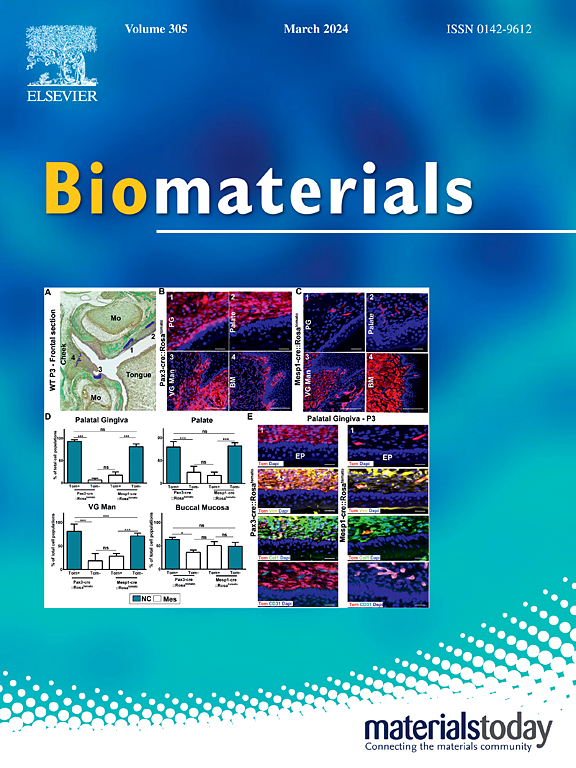Kidney-targeting DNA tetrahedral molecular cage synergistically inhibits acute kidney injury by clearing ROS and activating HO-1
IF 12.8
1区 医学
Q1 ENGINEERING, BIOMEDICAL
引用次数: 0
Abstract
Acute kidney injury (AKI) is a major cause of mortality in hospitalized patients, yet effective therapeutic interventions remain underdeveloped. To address this critical need, we have employed tetrahedral framework nucleic acid (tFNA) as a carrier to self-assemble a complex incorporating G-quadruplex and hemin (G4/Hemin). This novel formulation exhibits uniform particle size, targeted delivery, and significant therapeutic efficacy for AKI. In a chemotherapy-induced AKI model, G4/Hemin-tFNA preferentially accumulated in the renal tubules, significantly mitigating drug-induced renal tubular injury. In healthy mice, G4/Hemin-tFNA was rapidly cleared from circulation due to efficient renal filtration. Safety evaluations conducted over a continuous 30-day period indicated minimal side effects associated with G4/Hemin-tFNA administration. Mechanistic studies elucidated three primary molecular mechanisms through which G4/Hemin-tFNA exerts its therapeutic effects in AKI: 1) Enhanced Renal Targeting. G4/Hemin-tFNA facilitates effective renal targeting and protection during blood circulation, leading to significant accumulation of drug within the kidneys. 2) Reactive Oxygen Species (ROS) Clearance. The complex exhibits peroxidase-like activity, enabling the rapid clearance of ROS at the site of AKI lesions, thereby inhibiting the oxidative stress progression. 3) Activation of heme oxygenase-1 (HO-1). G4/Hemin-tFNA selectively activates HO-1, enhancing the concentration of anti-inflammatory factors at inflamed sites and promoting an anti-inflammatory microenvironment. Collectively, these findings demonstrate that G4/Hemin-tFNA is a safe and effective therapeutic agent for AKI. By activating HO-1 and clearing ROS, G4/Hemin-tFNA inhibits disease progression, offering a promising approach for the development of future AKI therapies.
求助全文
约1分钟内获得全文
求助全文
来源期刊

Biomaterials
工程技术-材料科学:生物材料
CiteScore
26.00
自引率
2.90%
发文量
565
审稿时长
46 days
期刊介绍:
Biomaterials is an international journal covering the science and clinical application of biomaterials. A biomaterial is now defined as a substance that has been engineered to take a form which, alone or as part of a complex system, is used to direct, by control of interactions with components of living systems, the course of any therapeutic or diagnostic procedure. It is the aim of the journal to provide a peer-reviewed forum for the publication of original papers and authoritative review and opinion papers dealing with the most important issues facing the use of biomaterials in clinical practice. The scope of the journal covers the wide range of physical, biological and chemical sciences that underpin the design of biomaterials and the clinical disciplines in which they are used. These sciences include polymer synthesis and characterization, drug and gene vector design, the biology of the host response, immunology and toxicology and self assembly at the nanoscale. Clinical applications include the therapies of medical technology and regenerative medicine in all clinical disciplines, and diagnostic systems that reply on innovative contrast and sensing agents. The journal is relevant to areas such as cancer diagnosis and therapy, implantable devices, drug delivery systems, gene vectors, bionanotechnology and tissue engineering.
 求助内容:
求助内容: 应助结果提醒方式:
应助结果提醒方式:


